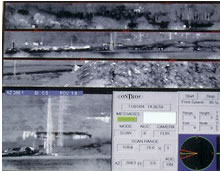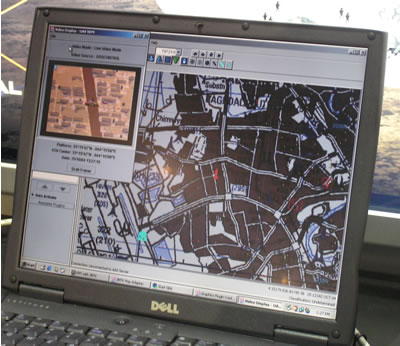Area scanning sensors are used to augment the covert Unattended Ground Sensors, (UGS) wide area coverage and automatic spotting of moving objects over a wide area. These visible sensors are having important deterrent effect on hostile infiltrators. In use are elevated sensors, covering a wider area with observation through electro-optical and radar surveillance means. One such system is the Persistent Threat Detection System (PTDS), already deployed under a Quick Reaction Capability (QRC) to Iraq in September 2004. The system uses a tethered aerostat, equipped with a high-resolution Electro-Optic/Infrared (EO/IR) payload. It integrates IR and radar sensors cueing the aerostat camera to provide near-real-time “eyes on target.” PTDS utilizes the Inter-Brigade Communication System (IBCS), which provides the communication backbone and networking capabilities of the system and will be integrated into the Persistent Surveillance Dissemination System of Systems (PSDS2) once fielded.
A different category of unattended sensors employs scanning sensors, including EO/IR and ground surveillance radars. Such sensors are scanning a larger area, automatically detecting moving targets. The coverage and distances of such sensors depend on the technology used such as, FLIR sensitivity, radar transmitted power and sensitivity, signal processing etc. These sensors are commonly used for perimeter protection, border security and battlefield surveillance. When operated individually, EO/IR systems could suffer from sensitivity degradation under certain conditions, while radar has its own weak spots, particularly in the rejection of false alarms and low velocity targets. Imaging and radar sensors can be integrated with very high probability of detection under all weather conditions. Scanning sensors can be used to cue adjacent remotely operated weapon stations, therefore rapidly closing a sensor-shooter loop engaging time sensitive targets. When a more flexible response is called for, such systems can be integrated with autonomous patrol vehicles, or manned patrols, to establish an effective rapid-response.
Additional parts of this article:
-
Ground Surveillance Sensors – Augmenting the UGS

















